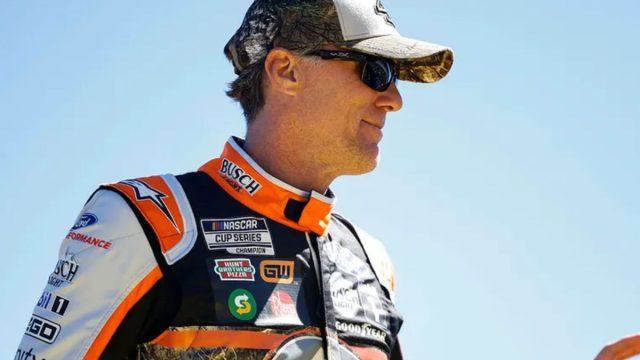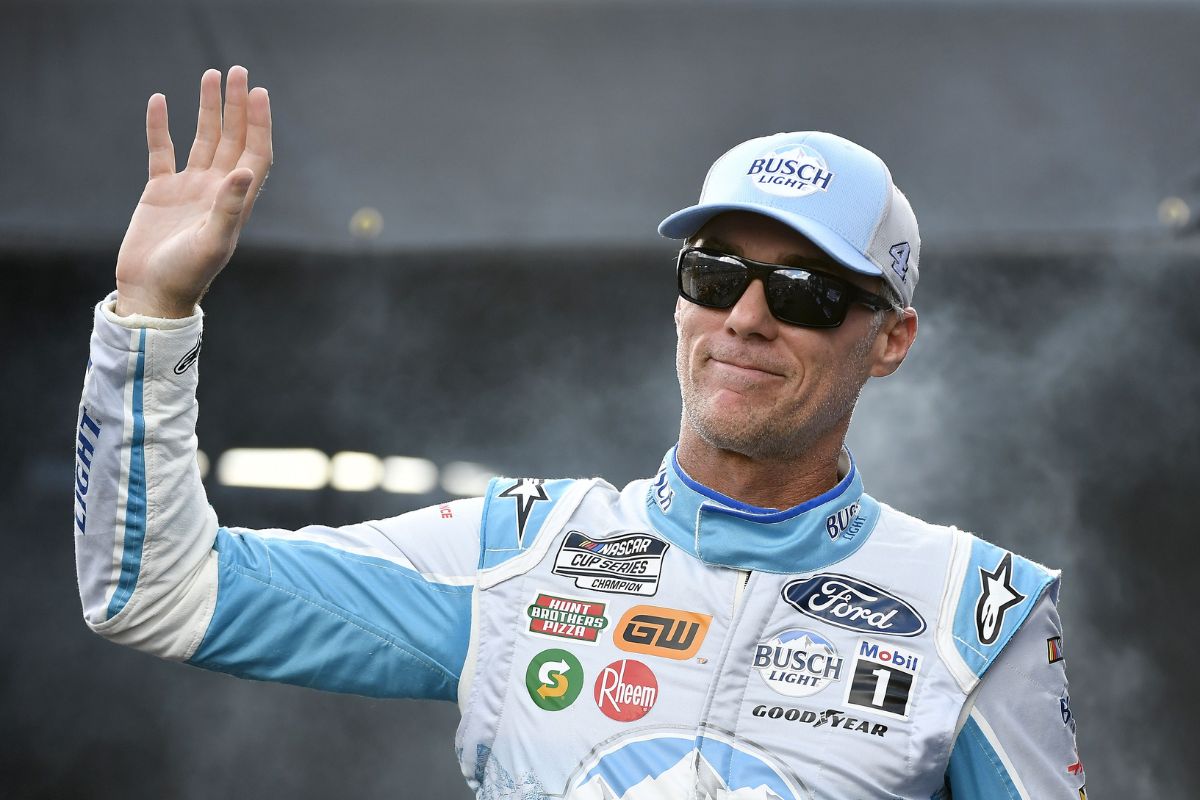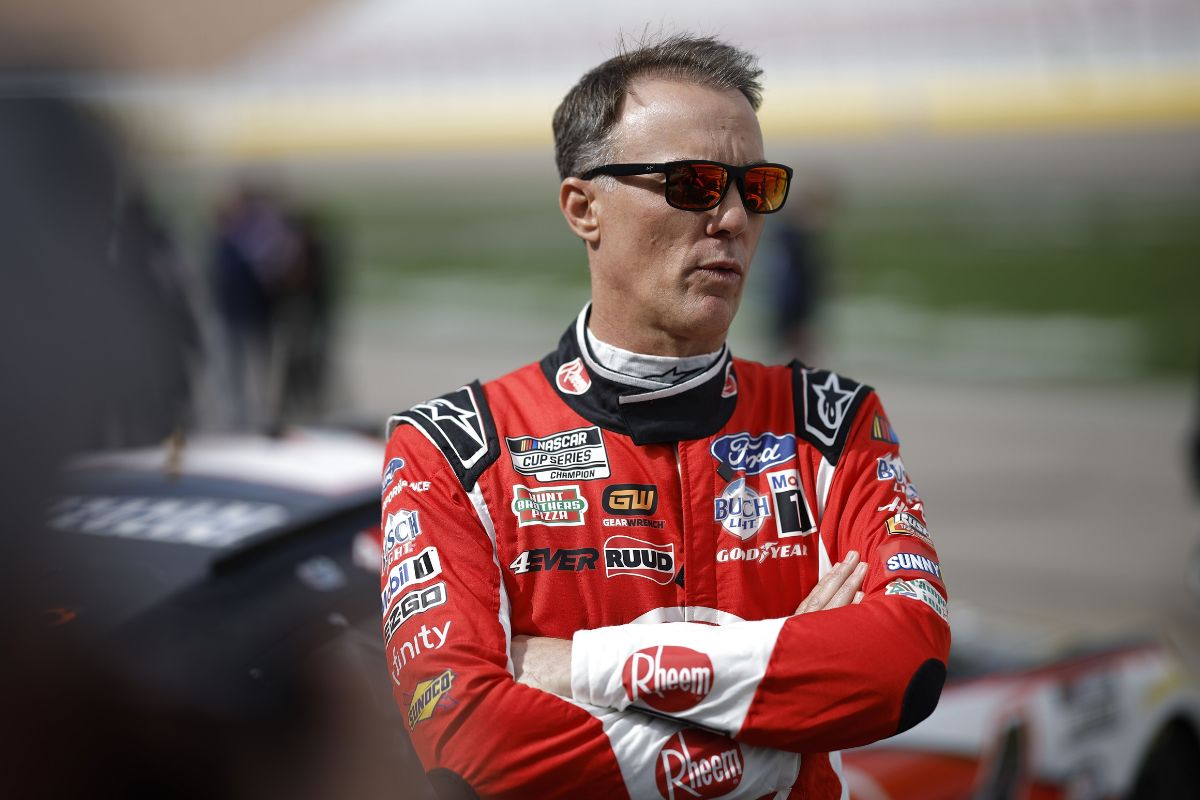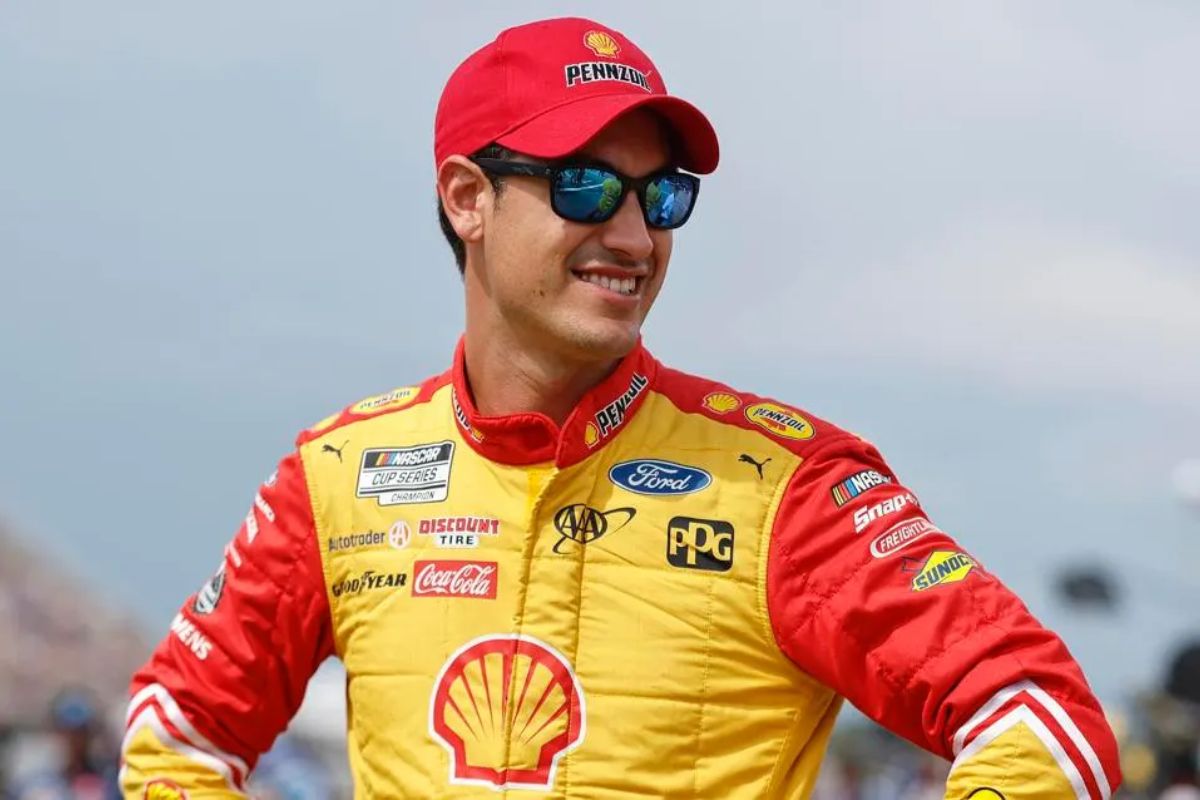Kevin Harvick Stunned by Kansas Stats: The recent statistics from Kansas Speedway have brought to light significant discrepancies with the Next-Gen cars, noticeably impacting the way races are conducted and won. Kevin Harvick, a seasoned veteran, was particularly taken aback by the downturn in qualifying speeds, a contrast to his own records from the earlier part of the decade. This discovery not only questions the efficacy of these cars in preserving the essence of competitive racing but also challenges the narrative that technological advancements inherently improve the sport.
Key Takeaways
- Harvick noted a 17mph drop in speed under Next-Gen specifications compared to his 2014 record.
- Next-Gen cars show a decrease in qualifying speeds, raising concerns about competitive parity.
- The shift to Next-Gen emphasizes driver skill over car technology, challenging previous racing strategies.
- Statistical data used by Harvick highlights a transformation in racecar engineering and strategy.
- Harvick’s analysis suggests that standardization may limit expression of driver skill and car performance.
Harvick’s Insights on Next-Gen Evolution at Kansas Speedway
Kevin Harvick’s detailed analysis of the Next-Gen cars at Kansas Speedway sheds light on the intricate challenges and adaptations required in NASCAR’s latest era of racing technology. As a seasoned driver, Harvick has consistently demonstrated proficiency in mastering diverse racing platforms, making his insights particularly valuable in understanding the nuanced dynamics of the Gen-7 Ford Mustang.
Harvick’s experiences at Kansas, a track where he has historically excelled, reveal a complex interplay between driver skill and vehicle mechanics under the Next-Gen specifications. The 1.5-mile oval, known for its moderate banking and high-speed stretches, has served as a critical test bed for evaluating the performance attributes of these advanced vehicles. Harvick’s encounters in the Gen-7 car highlight the necessity for a recalibrated approach to throttle control, aerodynamic balance, and tire management.
The shift to Next-Gen vehicles involves a significant change in handling characteristics. The cars are designed with a focus on reduced dependency on aerodynamics for stability, which places a greater emphasis on mechanical grip and driver input. This adjustment is crucial in tracks like Kansas, where the balance between speed and control can be razor-thin.
Harvick’s Comparison Between Two Eras
Reflecting on a decade of significant changes in NASCAR, Harvick highlighted the stark contrasts in vehicle performance and racing strategies between his record-setting 2014 run and the current Next-Gen era. Harvick’s 2014 campaign, notably at Kansas Speedway, exemplified an era where technological enhancements and tuning capabilities allowed teams to extract maximal performance from their vehicles. This period was marked by teams optimizing car setups and pushing the boundaries of engineering innovations to dominate races.
Harvick’s exceptional performance in 2014, driving the then-new #4 Ford for Stewart-Haas Racing, showcased not only individual skill but also the crucial role of car technology and team strategy. The record speed of 197.773 mph achieved during the qualifying at Kansas emphasizes a time when the focus was intensely on aerodynamics, engine power, and the subtle adjustments by pit crews that could make or break a race.
Transitioning to the Next-Gen era, the paradigm has shifted towards standardization of car components and a greater emphasis on driver skill and racecraft, minimizing the disparities in vehicle performance. This change aims to level the playing field, making races more competitive and unpredictable. While this shift brings a new set of challenges and strategies, it also stirs debates among drivers and teams accustomed to the old ways of distinct technological advantages.
Statistical Comparison and Perspective
Analyzing the statistical data, the evolution in NASCAR’s competitive landscape becomes apparent through a detailed comparison of historical and recent race performances at Kansas Speedway. Chase Elliott’s record-setting pace in 2018 starkly contrasts with the significantly longer race durations and reduced speeds observed in the Next-Gen car era, exemplified by Denny Hamlin and Tyler Reddick’s wins.
The decline in qualifying speeds is particularly illuminating. With Kevin Harvick’s 2014 track record surpassing recent pole-winners William Byron and Christopher Bell by almost 17 miles per hour, the data suggests a significant recalibration in car performance under the Next-Gen specifications. This reduction in speed, persisting across multiple races and seasons, emphasizes a fundamental transformation in racecar engineering and possibly, race management strategies.
Moreover, the consistent gap of 17 mph below the track record for pole positions, as evidenced in both the spring and fall races at Kansas with the Next-Gen cars, raises questions about the impact of these technological adjustments on competitive parity and driver skill expression.
Huh… pic.twitter.com/ICj47RNh1E
— Kevin Harvick (@KevinHarvick) April 30, 2024
Toyota Dominance and Ford’s Response
Toyota’s recent dominance at Kansas Speedway poses a significant challenge for Ford, as they aim to disrupt this streak with a strong performance in the upcoming race. The statistics highlight the strength of Toyota’s racing units, particularly 23XI Racing and Joe Gibbs Racing (JGR). With a series of victories at this venue, these teams have established a strategic advantage that is marked by both consistency and peak performance. The Camry XSEs of 23XI have been particularly formidable, securing three of the last four wins, while JGR’s Denny Hamlin clinched victory in the most recent race, emphasizing the strong synergy within Toyota’s camp.
Ford’s strategy, in response, has to be comprehensive. The focus is not only on outperforming Toyota on race day but also on disrupting their strategic stronghold. This involves a thorough analysis of performance analytics to extract insights from Toyota’s race-winning patterns. Moreover, Ford’s tactical response would likely involve optimizing car setups and pit strategies tailored specifically to the 1.5-mile tri-oval track at Kansas. The goal is to utilize the strengths of the Ford Performance vehicles, possibly capitalizing on any aerodynamic and handling advantages that could be crucial in race conditions.
Joey Logano’s Perspective and the Future of Next-Gen at Kansas
Joey Logano, the seasoned driver of the #22 Ford for Team Penske, recently highlighted the superior adaptability of the Next-Gen cars at Kansas Speedway, asserting that the track’s evolving conditions favor the advanced features of these vehicles. Logano, a thrice winner at Kansas, emphasized the track’s breadth and dynamic racing environment as particularly suited to the capabilities of Next-Gen cars. His analysis comes in the wake of differing performances seen in recent races, particularly the critique following the Dover event.
“I believe Kansas has become the best racetrack for the Next Gen car. You look at how wide the racetrack is and the racing that is there, the groove has moved around as it has weathered over the years since it’s been repaved. It’s been a really good race track for these cars, so I look forward to going there for sure.”
“It’s definitely one of those tracks where it takes everything.”
“Downforce is king. Horsepower is a big deal. You’re on the gas a lot. You’ve got to have a car that’s versatile enough to run the bottom on restarts and also be versatile enough on the long run to where you can move up or down to make passes. So the car that can do a lot of different things pretty good is usually the one that is the strongest.” -logano
Logano pointed out the critical role of downforce and horsepower at Kansas that are magnified by the Next-Gen car’s design. The car’s versatility in handling varying track positions—from hugging the bottom on restarts to adjusting lines for overtaking on longer runs—is highlighted as a key advantage. Logano’s insights suggest that the Next-Gen car not only meets but potentially exceeds the demands of a matured, multi-groove track like Kansas.
Looking ahead, the AdventHealth 400 is set to demonstrate these dynamics further. This upcoming event may serve as a critical litmus test for Next-Gen’s performance on intermediate tracks, which have historically presented challenges in terms of aerodynamic balance and tire wear.
News in Brief: Kevin Harvick Stunned by Kansas Stats
The data from Kansas Speedway highlights a significant period in NASCAR due to the Next-Gen cars. This emphasizes a decrease in qualifying speeds and raises concerns about competitive parity and the essence of driver skill.
This shift necessitates a reevaluation of racecar engineering and strategic approaches. The ongoing dominance of certain manufacturers and the varied responses from competitors suggest that adjustments and innovations are imperative for maintaining the integrity and excitement of the sport in the Next-Gen era.
Our Reader’s Queries
Q. How many laps has Kevin Harvick led?
A. During his nine-season tenure at Stewart-Haas Racing (SHR), Harvick has achieved notable success, securing 37 victories and 25 pole positions. Impressively, his tally of 11,475 laps led significantly surpasses the 4,426 laps he led in the preceding 13 seasons combined. Within the span of 324 NASCAR Cup Series races since joining SHR, the No. 4 team has garnered 64 top-two finishes, 145 top-five finishes, and 221 top-10 finishes.
Q. How many times did Kevin Harvick win?
A. Harvick’s accomplishments extend beyond the NASCAR Cup Series. He clinched two championships in what is now known as the NASCAR Xfinity Series, solidifying his position as the third-highest race winner of all time with 47 victories. Additionally, Harvick boasts 14 triumphs in the NASCAR Craftsman Truck Series as a driver, along with a truck championship achieved as a team owner.
Q. Who is replacing Kevin Harvick?
A. A NASCAR rookie steps in to fill the shoes of Kevin Harvick. Berry has officially joined Stewart-Haas Racing, taking over the spot left vacant by former Cup champion Kevin Harvick, who retired following the conclusion of the 2023 season.
Q. Has Kevin Harvick ever won a championship?
A. Harvick’s most recent full-time endeavor was in the NASCAR Cup Series, piloting the No. 4 Ford Mustang for Stewart-Haas Racing. His illustrious career includes capturing the Cup Series championship in 2014, along with securing the Xfinity Series championships in 2001 and 2006, and a victory at the 2007 Daytona 500. Harvick hails from Bakersfield, California, USA.
ALSO READ: Kevin Harvick’s Martinsville Picks: Who Will Claim Victory?



